Last Updated on April 4, 2023
It’s no exaggeration to say that filmmaking legend Brian De Palma has had an eclectic and often spectacular career, spanning over fifty years that have brought audiences many unforgettable and classic movies. 1976’s Carrie remains an often referenced (we’re looking at you Wednesday!) horror masterpiece, crime drama Scarface is all time gangster gold, while his first entry in the Mission: Impossible franchise is still perhaps one of the strongest instalments for a then young and even more sprightly Tom Cruise. However, it’s De Palma’s 1987 The Untouchables, an adaptation of the 1950’s TV serial that focuses on the attempts to bring down crime lord Al Capone, that really shows his versatility as a director. The award winning film features several iconic scenes that are now etched in the minds of movie fans around the globe; from the Union Station shoot-out with full-on baby-in-great-peril slow-mo action shot, to the Oscar winning performance by the late great Sean Connery. It’s a superior showcase of impeccable acting, tense showdowns and yes, questionable Irish accents and it’s time to see if they save that pram from crashing down those stairs, here on REVISITED!
The film is loosely based upon the book of the same name from 1957 and while it was based upon real-live events, much of the actual plot of the movie was fictionalized. It follows Elliot Ness who forms a special team of agents handpicked for their courage, moral character, and incorruptibility, nicknamed the Untouchables. Their task is to bring down Al Capone during the prohibition era in 1930s Chicago, America and the movie helped to launch the careers of many of its key actors. The film stars Kevin Costner, fresh from anthology TV show Amazing Stories, as Eliot Ness alongside Charles Martin Smith, Andy García, Robert De Niro (in his third collaboration with De Palma, following 1968’s Greetings and 1970’s Hi, Mom!). And, of course, the legend that is Sean Connery, who once again defies logic, and probably his director, with an accent that doesn’t necessarily befit his character, and ultimately didn’t stop him winning a best supporting actor Oscar for the role. Hey look, if they guy can play an English King with a broad Scottish baritone burr in Robin Hood: Prince of Thieves and get away with it then fair play to him.
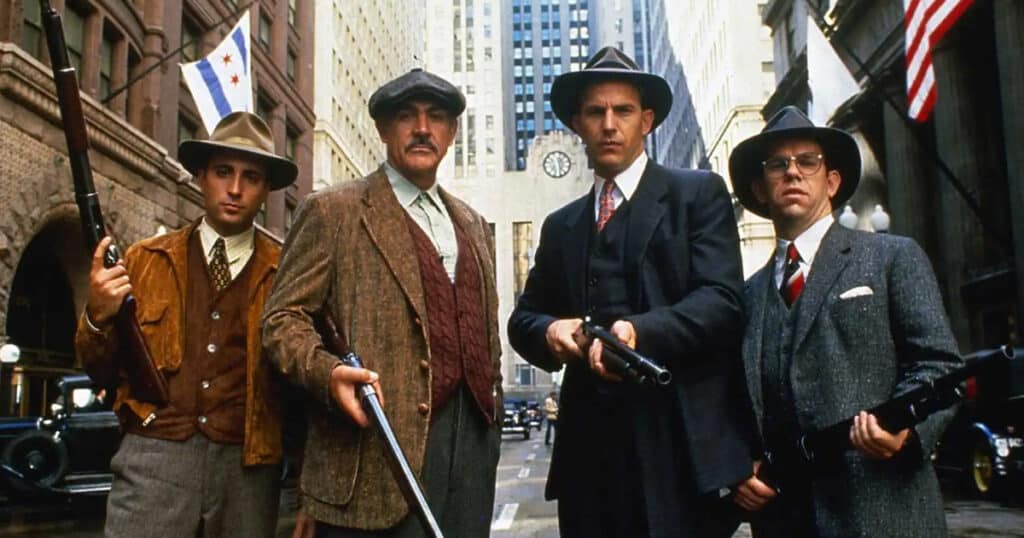
The Untouchables premiered on June 2nd, 1987 in New York City and then went on general release the following day across the rest of the United States, followed by a worldwide release a little later in the summer of the same year. The movie grossed $106.2 million internationally with roughly half of that amount coming from the US and Canada alone, on an estimated budget of $25 million. The critical response to the movie was generally positive and as well as Connery’s best supporting actor win it was also nominated for four other Academy Awards, for Art Direction, Costume and Score.
While many epic productions encounter issues while either in development or during production, The Untouchables went full steam ahead, eventually, without too much drama behind the scenes. Whilst working as an executive at Universal Pictures during the 1970s and 1980s, Ned Tanen spent years attempting to obtain the rights to Eliot Ness’s life story and it wasn’t until he became Head of Motion Pictures at Paramount Pictures, who happened to own the rights to Ness’s memoirs The Untouchables, that he was able to move the project into production. Tanen hired Art Linson to produce the film adaptation and also David Mamet, who had already achieved some screenwriting acclaim with 1981’s The Postman Always Rings Twice and 1982’s The Verdict respectively. The majority of Mamet’s screenplay was used but De Palma re-wrote some sequences during production including the aforementioned baby-in-tumbling-pram-peril Union Station sequence that was originally set in a hospital. De Palma, however, downplayed his role in the scriptwriting process and instead gave credit to the collaboration he ultimately had with Mamet, stating that, “being a writer myself, I don’t like to take credit for things I didn’t do. I didn’t develop this script. David [Mamet] used some of my ideas and he didn’t use some of them. I looked upon it more clinically, as a piece of material that has to be shaped, with certain scenes here or there.”
While the script was being finalised, the focus for the production then turned to just exactly who could bring this eclectic group of characters to the silver screen. The 1950’s TV series featured a ‘tough’ portrayal of Eliot Ness by the award winning Robert Stack, but both Brian De Palma and Art Linsen wanted their incarnation of the character to be more tender and more of a ‘vulnerable family man’ than what had come before. Also, various significant names had initially been considered for the cast, including Don Johnson as Ness as well as the likes of Michael Douglas, Harrison Ford, William Hurt, Mickey Rourke and Jeff Bridges who had also all turned down the role. The part of Al Capone, on the other hand, was slightly more complicated to finalise than the other primary members of the production. De Palma’s first choice was the legendary Robert De Niro but his appearance in the Broadway play Cuba and His Teddy Bear threw doubt on his availability to take on the Capone role. The actor was also keen on going full on method for the part by gaining 30 pounds in weight as, according to De Palma, he was ‘concerned about the shape of his face for the part’. This led De Palma to approach English actor, and star of Brazil and Mona Lisa, Bob Hoskins, believing that first choice De Niro would fall by the wayside. De Palma even went so far as sending Hoskins a ‘thank you’ cheque for $200,000 for his contractual agreement, despite De Niro eventually being given the part. Hoskins then humorously called up De Palma to ask if there were any other films he didn’t want him to be in!
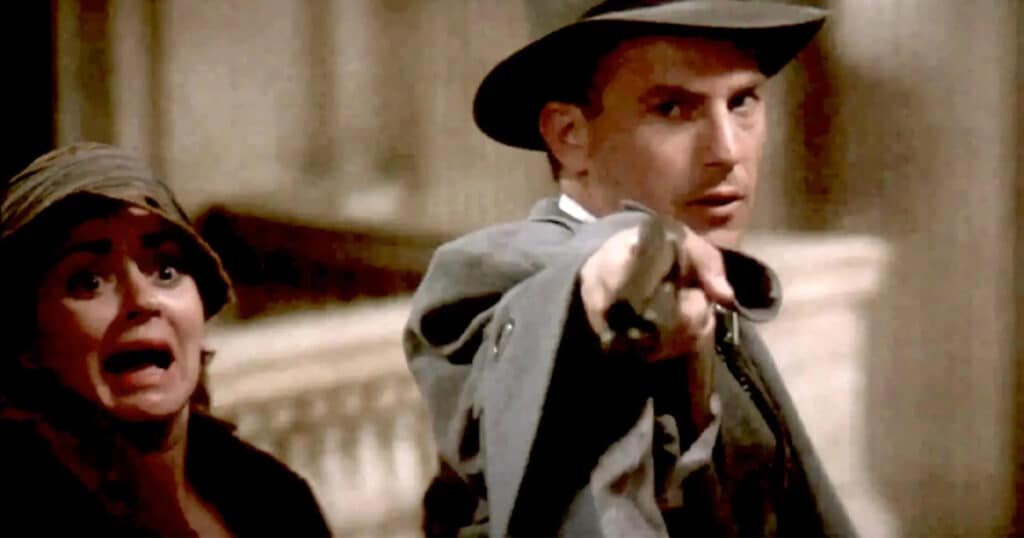
The movie is set in 1930, during prohibition, and gang leader and all round Chicago kingpin, Al Capone, is in control of supplying illegal booze across all of the city. Eliot Ness, an agent for the Bureau of Prohibition, is tasked with putting a stop to Capone’s operations, however his first attempt at a risky liquor raid fails due to Capone being alerted to the operation by corrupt cops. He then gets an offer of help in the form of Sean Connery’s Irish-American police veteran, Jimmy Malone, whose opposition to the corruption in the police leads him to suggest they recruit an officer from the academy, who has not yet been turned by Capone and his men. They recruit Andy Garcia’s George Stone and together they begin a successful campaign against Capone by raiding one of his liquor warehouses. To show his subordinates just exactly who the boss is and to warn them of any future indiscretions, Capone brutally murders the warehouse manager with a baseball bat.
The group’s accountant Oscar Wallace, played by Charles Martin Smith, discovers that Capone hasn’t filed an income tax return for four years and devises a tax evasion case against Capone, however this does not go as smoothly as they hoped for. A dodgy alderman offers Ness a bribe in order to halt the investigation into Capone and when he refuses, one of the gangsters’ enforcers, Frank Nitti (played by excellent character actor Billy Drago), threatens to kill Ness’s wife and daughter, prompting him to move them swiftly to a safe house. Ness and his team continue their ongoing raids against Capone’s operation and in a subsequent operation on the Canadian border they intercept a liquor shipment, kill several gangsters and also capture one of Capone’s bookmakers, George who is eventually persuaded to testify against his boss. However, back in Chicago, NItti, dressed as a policeman, kills both accountant Wallace and the newly recruited George in a police station, prompting a vengeful Ness to confront Capone at the Lexington Hotel. Malone intervenes and urges Ness to focus his attentions solely on persuading the case against Capone to be kept active by the district attorney.
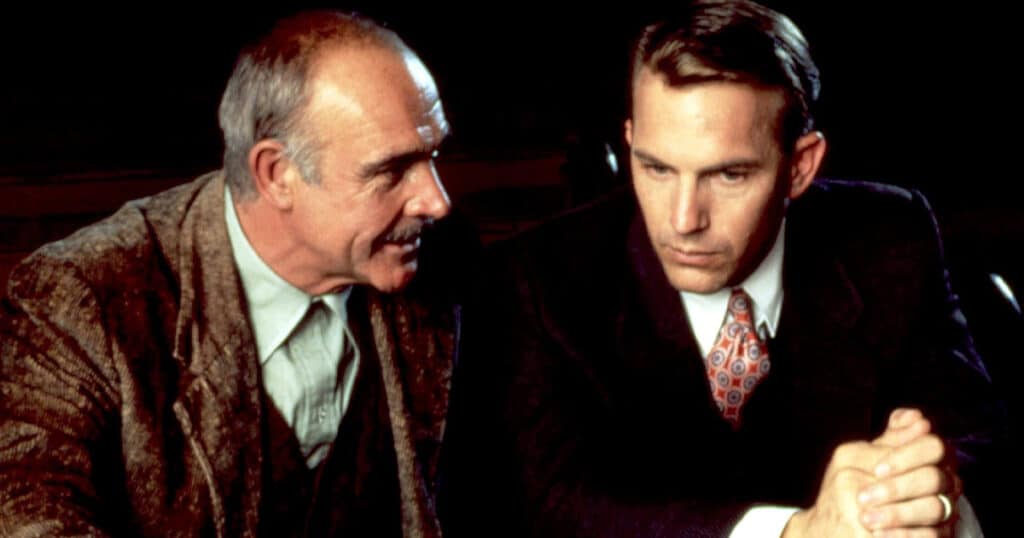
What follows is one of the era’s most iconic death scenes and the moment in which, yes, you’ve guessed it, we get some slo-mo pram hurtling down the station stairs shoot-out action. Connery’s Malone realises that police chief Mike Dorsett was responsible for the deaths of George and Wallace and forces Dorsett to give up where Capone’s accountant, Walter Payne, is hiding. However, that evening Malone is ultimately gunned down by Nitti by way of a ferocious tommy gun attack. He lies mortally wounded but is able to tell Ness and Stone which train Payne is taking out of Union Station to get out of town. While waiting for the accountant, Ness helps out a mother who is struggling to carry her luggage plus her baby’s pram up the lobby steps. They reach the top but are confronted by Capone’s men and what follows is not only a bloody gun battle but also a nail-biting, expertly edited tense showdown. Ultimately, although outnumbered and the odds stacked against them, Ness and Stone manage to capture Payne while keeping the mother and child alive. This is arguably the most memorable sequence from the movie. Shot in slow motion it’s unbearably tense – unfortunate bystanders are taken out by stray bullets and even the baby somehow survives bullet’s riddling its wooden pram. Shots of the pram’s wheels tumbling down the stairs are intercut with bloodied corpses and eventually Stone stops the pram with his knee and dispatches the last of Payne’s bodyguards following Ness’s orders to ‘take him!’. Thrilling!
At the film’s denouement, Ness discovers during Capone’s trial, that it was Nitti who murdered Malone and after a tense chase to the courthouse roof, Ness pushes Nitti to his death, avenging the deaths of both Wallace, and Malone. Capone is ultimately convicted of tax evasion and sentenced to eleven years in prison. As Ness closes up his office and leaves the police station a reporter asks him what he’ll do after the end of Prohibition, to which Ness replies, “I think I’ll have a drink”!…
At the start of the 1980’s, acclaimed film director Brian De Palma was looking for some joy at the box-office with a movie that only filled his, and the studio’s, bank accounts but that also raised his profile so that he could focus on other, more personal artistic projects. Buoyed by a diverse demographic audience the movie made back triple its production and marketing budget and was the sixth highest debut of the year.
Despite the impeccable acting talent and production values on display from all involved, it’s really a showcase for director De Palma’s filmmaking prowess and visual trademarks. All of his tricks of the trade are on display in a dramatic, ballsy adventure that does not scrimp on the claret amongst the rising tensions between The Untouchables and Capone. De Palma is also well renowned for his Hitchcock infused plot twists and turns and while The Untouchables is a slight departure from the norm for the director it is nonetheless a resounding triumph overall – a gangster tale as epic as the scale in which it is rendered.
David Mamet’s screenplay features everything you would come to expect from the genre – good guys, bad guys, comedy, iconic scenes, plenty of meaty dialogue for Costner and crew to chew on and a memorable ending. Also, for a tale that on paper at least, looks like a fairly cut and dried battle between good and evil, Mamet throws in some complexity by showing Ness going outside of the law in order to get his man. Malone also reiterates this to Ness by saying “”You wanna know how you do it? Here’s how: they pull a knife, you pull a gun. He sends one of yours to the hospital, you send one of his to the morgue!”
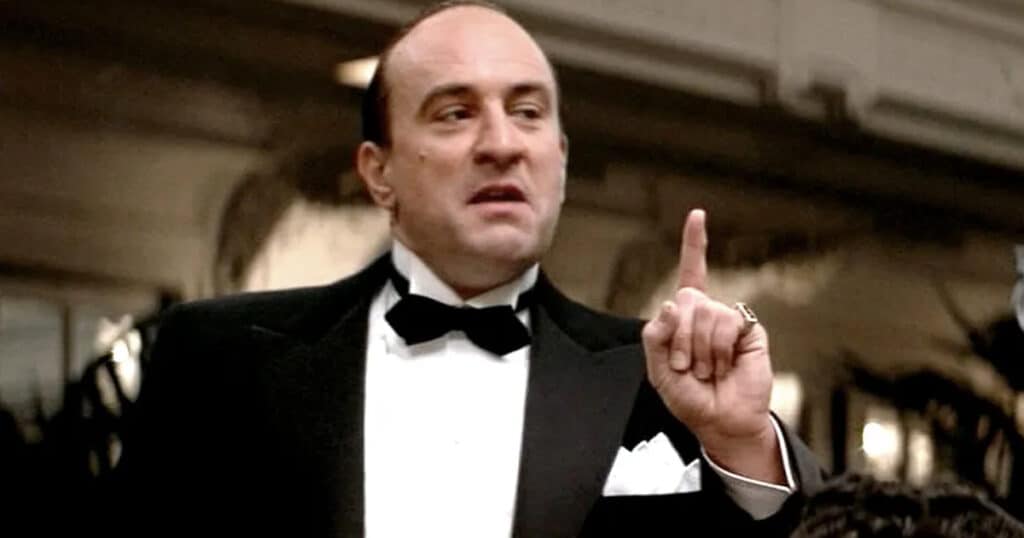
In simple terms, however, The Untouchables is a fantastic, if slightly flawed, gangster / adventure movie with several tremendous set-pieces, brutal and bloody action plus a script that delivers one quotable line after another. One criticism is that it perhaps spends a little too much time on Ness’s home life, with his family’s presence in the film ultimately a way to further humanize the main protagonist and provide a credible threat for Capone to latch onto. Overall though, De Palma’s legacy is fantastic and The Untouchables is arguably one of his most iconic and quotable movies, even with his aforementioned Mission Impossible entry as competition.
The movie opened on June 3rd in 1987 in over a thousand screens where it grossed $10,023,094 on its opening weekend which was the sixth highest overall for the year. It then went on to make $76.2 million in North America alone and interestingly, polls for the movie showed that approximately 50% of the audience for the movie were woman. Violent action movies such as this usually skewed more towards a male audience at the time but the inclusion of complex relationships and it being a tale of redemption allowed audiences to forgive its excessive violence.
The Untouchables also scored mostly favorably with critics – On Rotten Tomatoes, if stats from that site are anything to go by, it has an approval rating of 82% based upon reviews from 71 critics with an average rating of 7.60/10. The New York Times gave the movie a positive review, calling it “a smashing work” and saying it was “vulgar, violent, funny and sometimes breathtakingly beautiful” while Empire Magazine awarded it four out of five stars, praising its ‘superb performances, exquisite direction’ and also Ennio Morricone’s score. The New Yorker were less impressed, however, writing that it was “not a great movie; it’s too banal, too morally comfortable” while Time magazine took a more positive slant on the film, suggesting it was one of the best movies of 1987.
Whatever your view of the movie is, and please let us know in the comments section below, there’s no denying the fact that De Palma has crafted a beautifully shot and unforgettable tale of good vs evil, police corruption and slow-motion pram-peril and not only did that bank balance of his surely improve, so did his credentials as a respected mainstream AND artistic director.






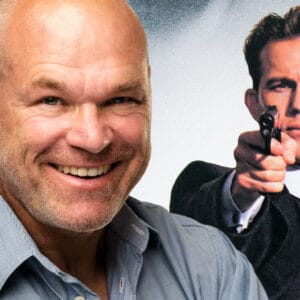
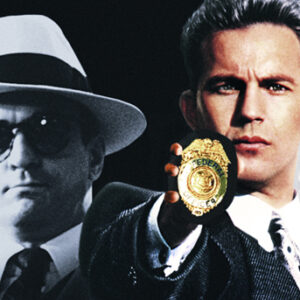












Follow the JOBLO MOVIE NETWORK
Follow us on YOUTUBE
Follow ARROW IN THE HEAD
Follow AITH on YOUTUBE